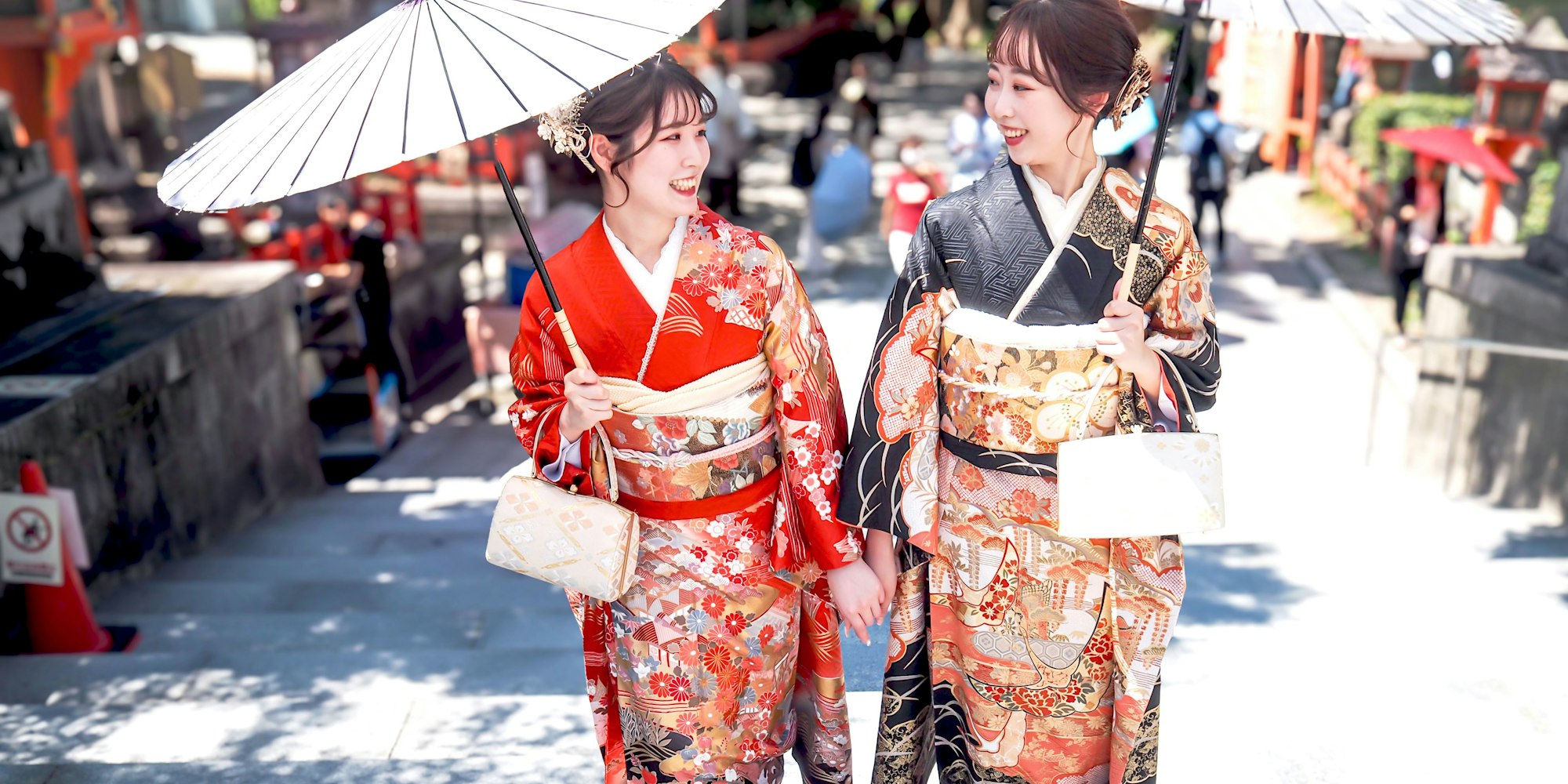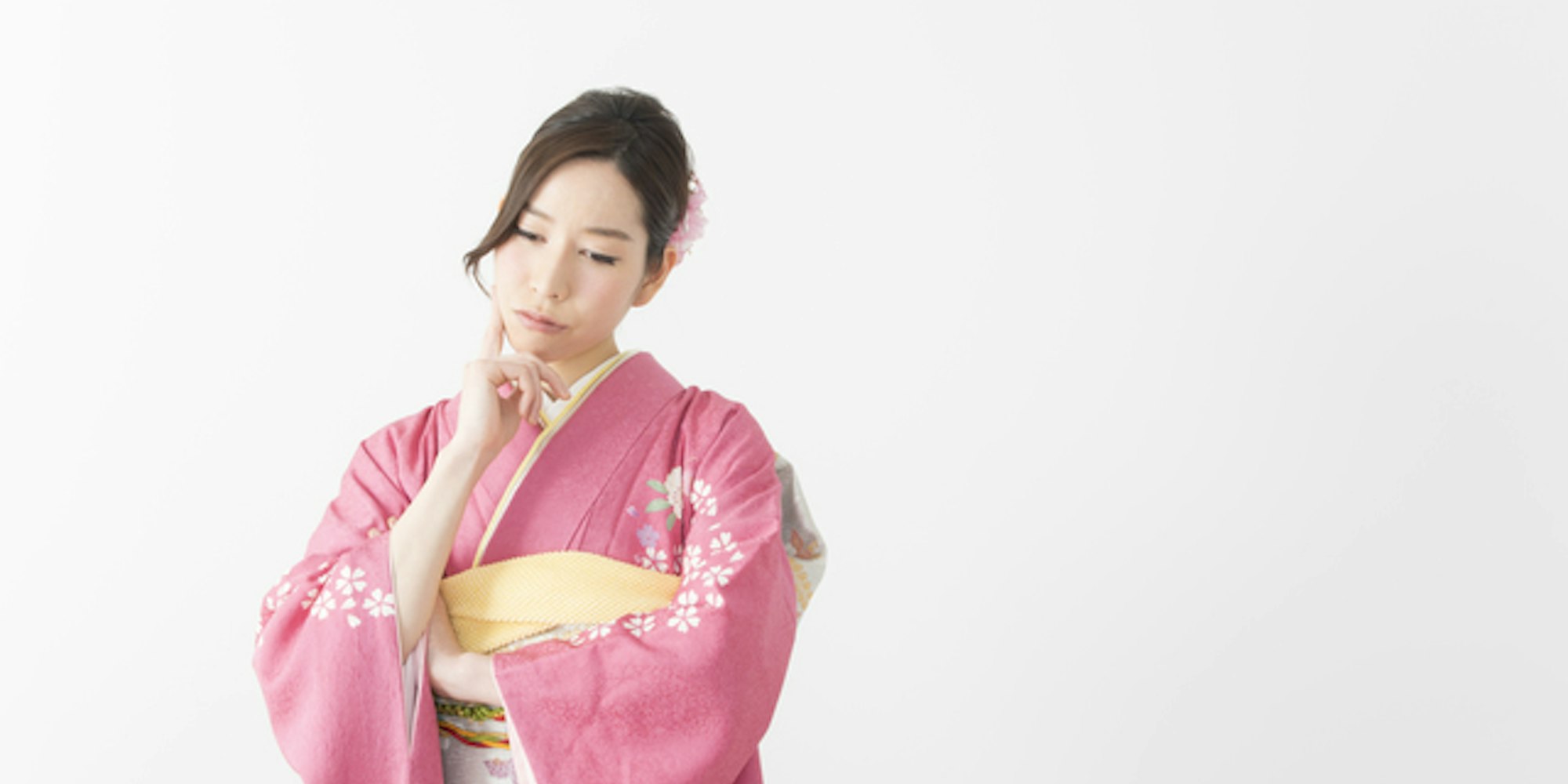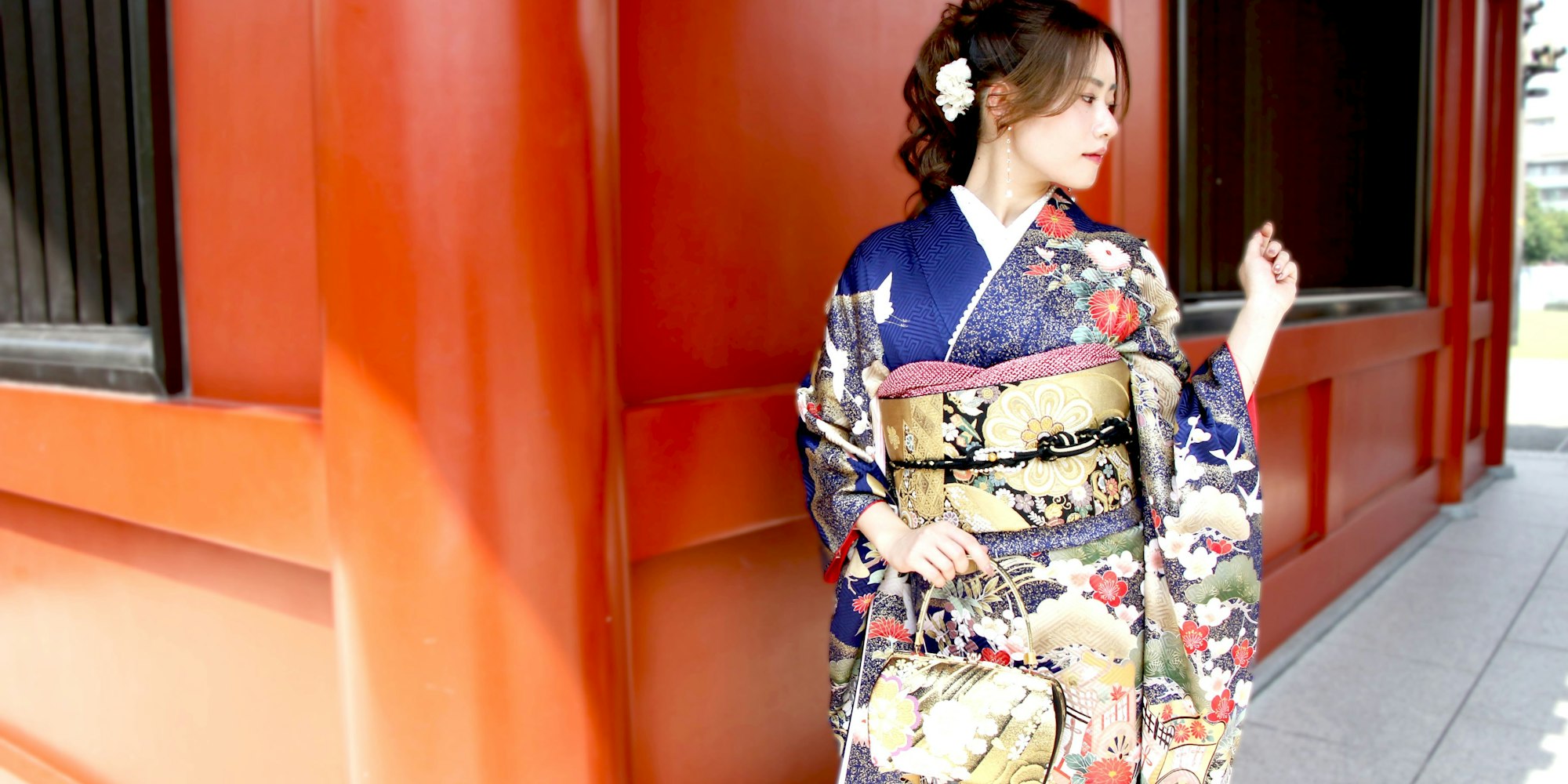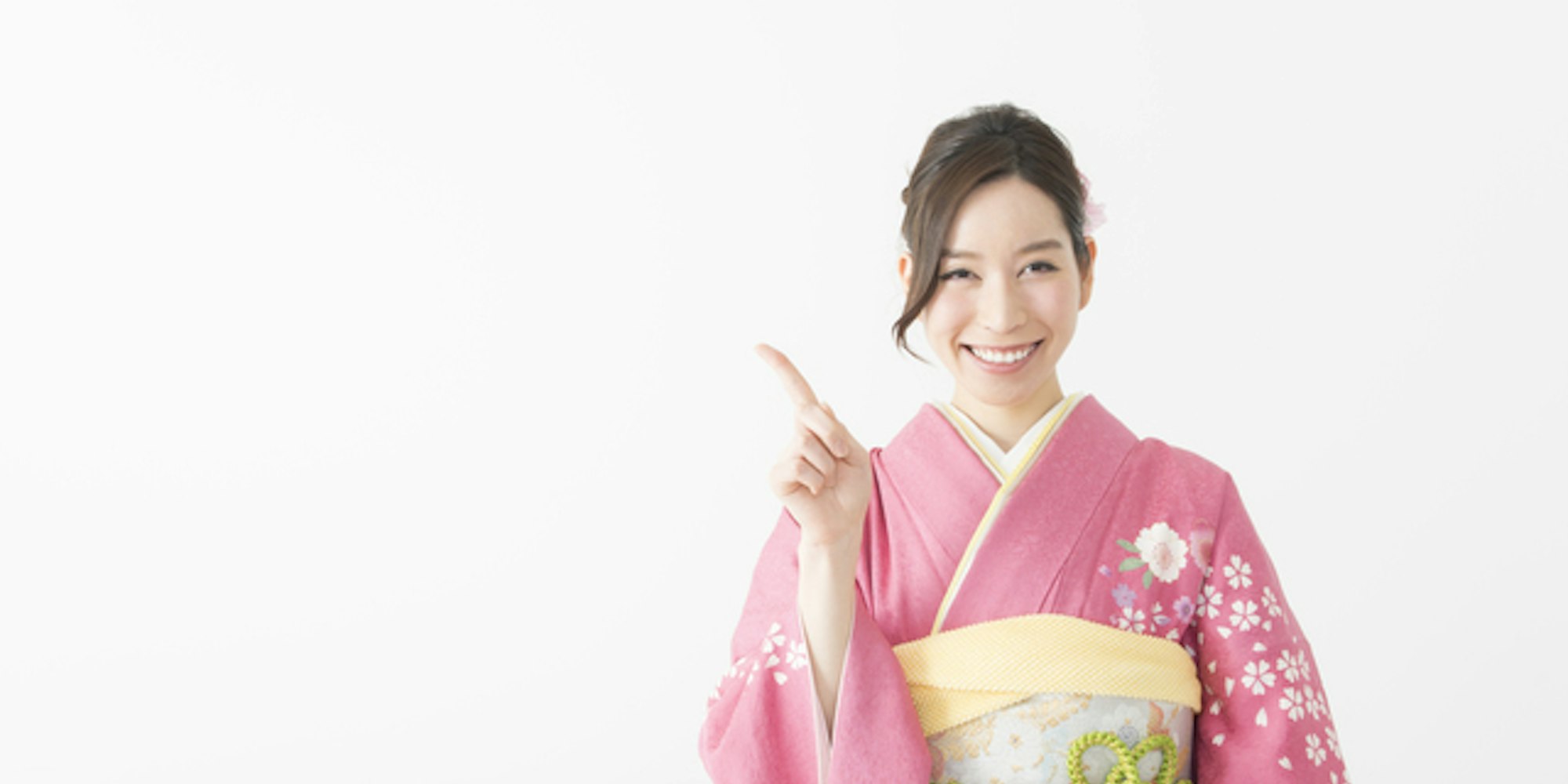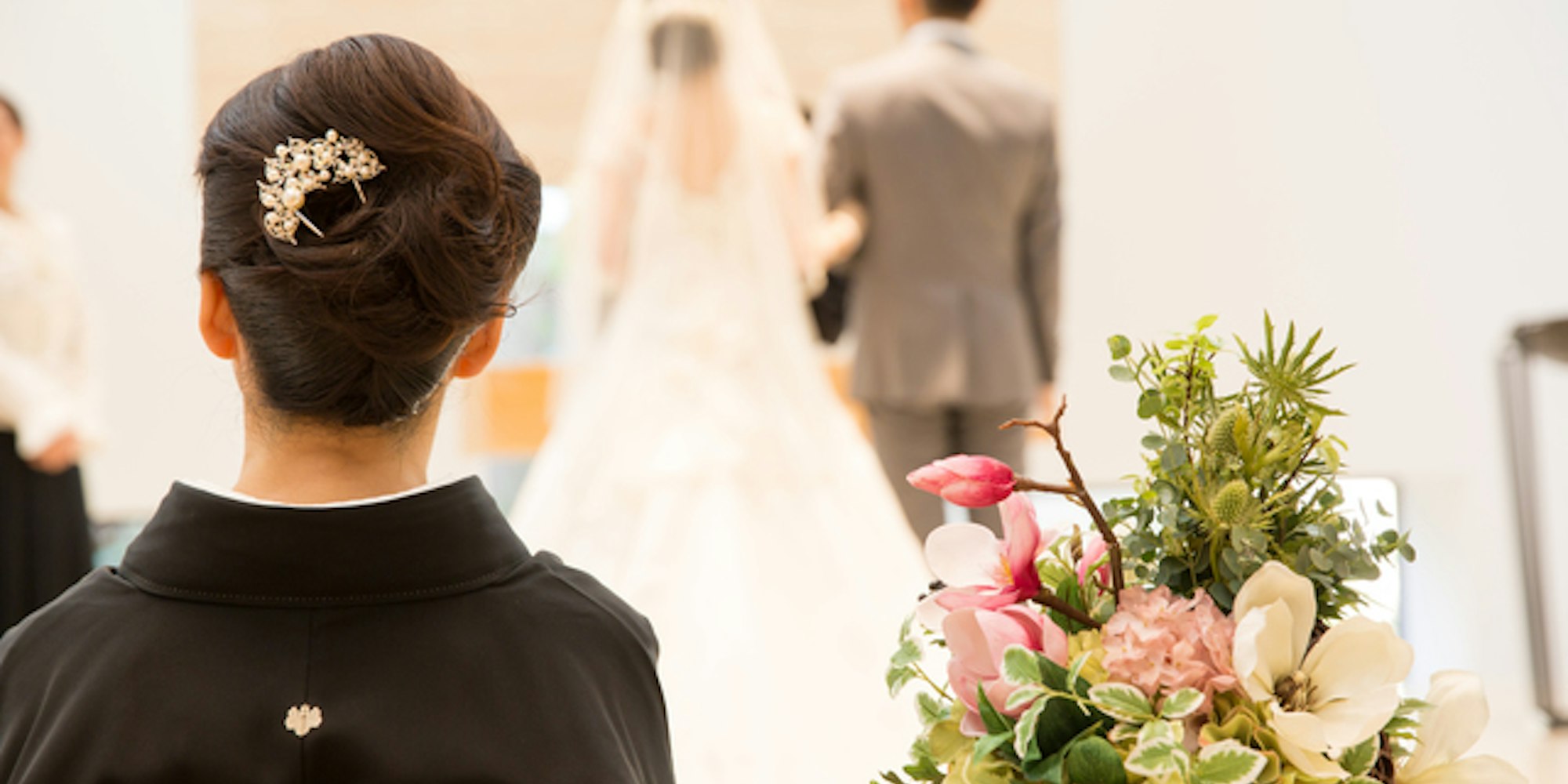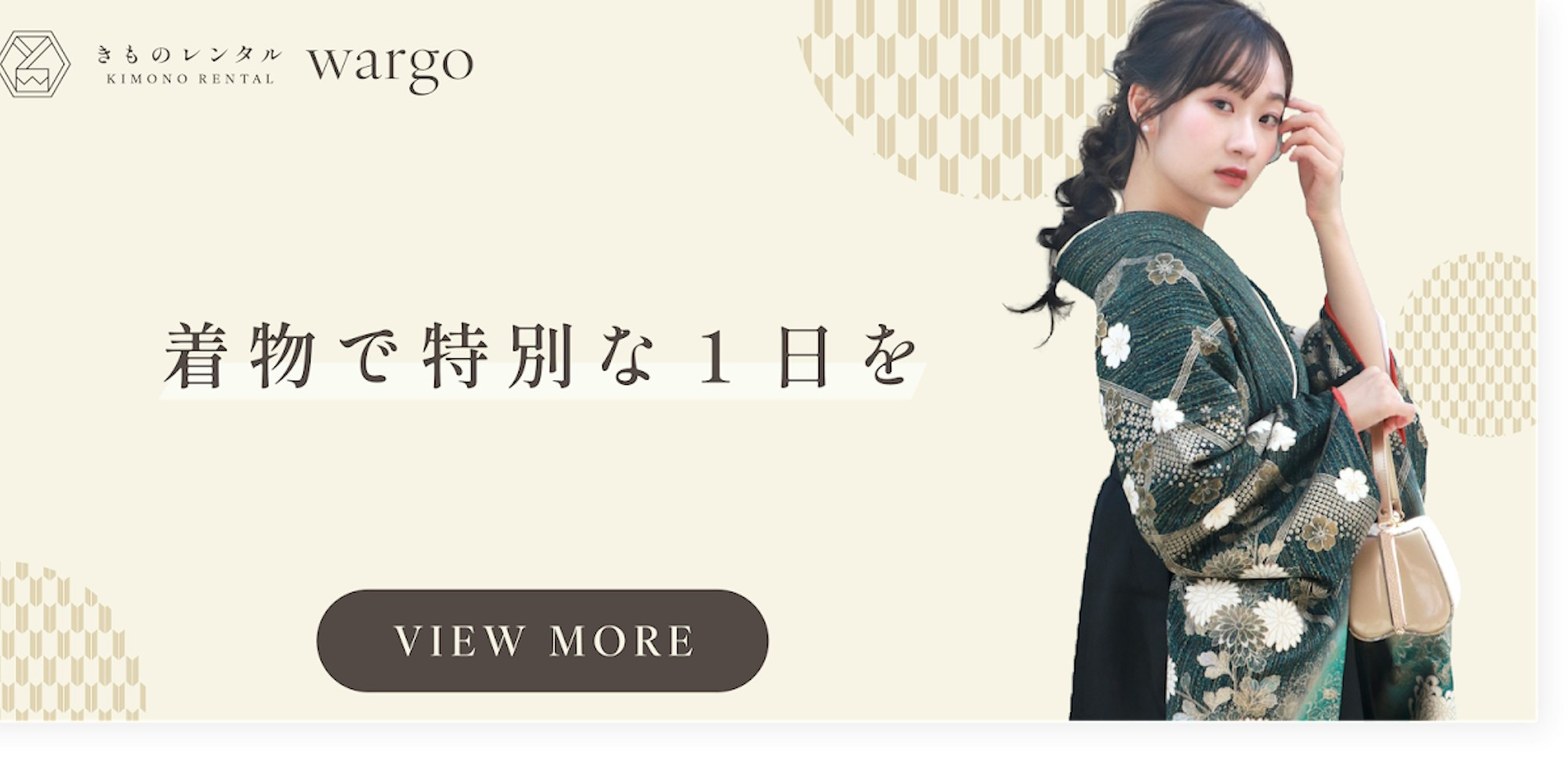Attending a wedding as a relative. While it's a deeply meaningful occasion, it's a different position than being invited as a friend, and you might often worry about what to wear. You'll want to choose appropriate attire based on your relationship with the bride and groom, your age, and so on.
We will explain in detail the points to note when relatives wear furisode at a wedding or reception, as well as how to choose attire for parents, siblings, and other relatives at a family wedding.
>>We also recommend these articles:Yukata Rental at Gion Matsuri in Kyoto with Wargo
Is it Okay to Wear Furisode to a Relative's or Friend's Wedding?
For unmarried women, furisode is the most formal attire in Japanese traditional wear. Other options for weddings include *houmongi* and *irotomesode*, but all of these are considered less formal than furisode.
Furisode is formal wear that can only be worn while unmarried, so it's something to enjoy while you can. Furthermore, when attending as a relative welcoming guests, or when you have a special role such as being asked to be a receptionist even as a friend, it's important to dress respectfully and add a touch of elegance.
In such cases, wearing a furisode is an excellent choice.
Types of Furisode
About O-furisode (Long-sleeved Furisode)
Also known as *Hon-furisode*, this furisode has sleeves approximately 115cm long and is considered the most formal attire, the "first ceremonial dress." In the past, *O-furisode* was worn by brides as wedding attire.
Even today, some brides wear *O-furisode* for their change of attire (*oironaoshi*). In recent years, more people have also been wearing it for Coming-of-Age ceremonies.
About Chū-furisode (Medium-sleeved Furisode)
The sleeves are approximately 100cm long. Following *O-furisode*, *Chū-furisode* is considered "semi-formal attire." It is perfect for celebratory occasions such as Coming-of-Age ceremonies and graduation ceremonies, and is also considered appropriate for attending weddings.
Especially if the bride plans to wear an *O-furisode*, it is advisable to choose a *Chū-furisode* to avoid overlapping in formality.
About Ko-furisode (Short-sleeved Furisode)
The sleeves are approximately 85cm long and it is also known as *Nishaku-sode*. It is often worn with *hakama* for graduation ceremonies. Since the sleeves are shorter, it is lighter, easier to move in, and has a more casual impression.
It is also perfect for less formal parties, tea ceremonies, and theater performances.
Important Points to Remember When Wearing Furisode
Colors and Patterns
Attending in a gorgeous furisode adds color to a joyous day. However, the main star of a wedding or reception is, without a doubt, the bride.
To avoid overshadowing the bride, refrain from wearing colors like white or red, and if the bride plans to wear an *O-furisode*, choose a *Chū-furisode* instead. It's also a good idea to confirm the bride's attire beforehand.
Furthermore, when attending as a relative, you are in a position to host guests, so strive for an outfit that creates a proper and dignified impression.
Coordination
Many people haven't worn a furisode since their Coming-of-Age ceremony, right? While some may look younger than their actual age and others older, in any case, an overly flashy outfit, like one for a Coming-of-Age ceremony, can give a mismatched impression.
Even with the same furisode design, by changing the *obi* (sash) and accessories, or by choosing items in subdued colors and shapes, you can create an outfit that is age-appropriate and suitable for a relative.
Hairstyle and Hair Accessories
Since the furisode itself is gorgeous, it's better to keep the hairstyle relatively simple for a neat and cohesive look. Choose hair accessories that match the furisode's pattern (such as *kanzashi* or pearls) and only add a touch of elegance. If attending as a relative, be careful not to be overly extravagant.
Other Points
When wearing a kimono at a wedding or reception, it is considered bad manners to wear accessories other than rings. Bracelets, earrings, and the like should be removed.
Furthermore, it is considered bad manners to wear items that evoke animals at celebratory occasions. Avoid furs, for example, which might be worn for a Coming-of-Age ceremony.
Basic Attire for Relatives at a Wedding
Father's Attire (Child's Wedding)
Among relatives, parents, who have the closest relationship, are generally expected to attend in formal attire. For fathers, Western attire would be a morning coat (for daytime ceremonies), or a tailcoat or tuxedo (for evening ceremonies). For Japanese attire, it would be a *montsuki haori hakama* with five crests.
For occasions like restaurant weddings, a slightly more casual semi-formal attire (director's suit) or informal attire (black suit) may be chosen.
Mother's Attire (Child's Wedding)
Similar to fathers, mothers are generally expected to attend in formal attire. For Japanese attire, it would be a *kurotomesode*. For Western attire, an afternoon dress (for daytime ceremonies) or an evening dress (for evening ceremonies) should be chosen.
For more casual venues, *irotomesode* or *houmongi*, or a long dress, formal dress, or ensemble suit would also be good choices.
Brothers' Attire (Sibling's Wedding)
Siblings of the bride and groom, as well as relatives such as aunts, uncles, and cousins, generally choose semi-formal or informal attire.
Brothers and male relatives wear director's suits or black suits. However, if the father is wearing a director's suit, it is advisable to choose a slightly less formal option like a black suit. Ties should be white or silver, and leather shoes should be black.
Sisters' Attire (Sibling's Wedding)
For sisters and female relatives, if choosing Japanese attire, *kurotomesode* (for all married ages), *irotomesode* (for married women up to their early 30s), *houmongi*, or *furisode* (for unmarried women) would be appropriate.
For Western attire, a formal dress, cocktail dress, or suit would be worn. Some sources also suggest that as a relative, it is good manners to dress more modestly than other guests.
Summary
A wedding for someone important. When attending as a relative, it is important to remember that you are on the side of hosting guests, and to strive for attire that conveys a proper sense of formality.
By all means, on special days, please try wearing a furisode with a celebratory spirit.


